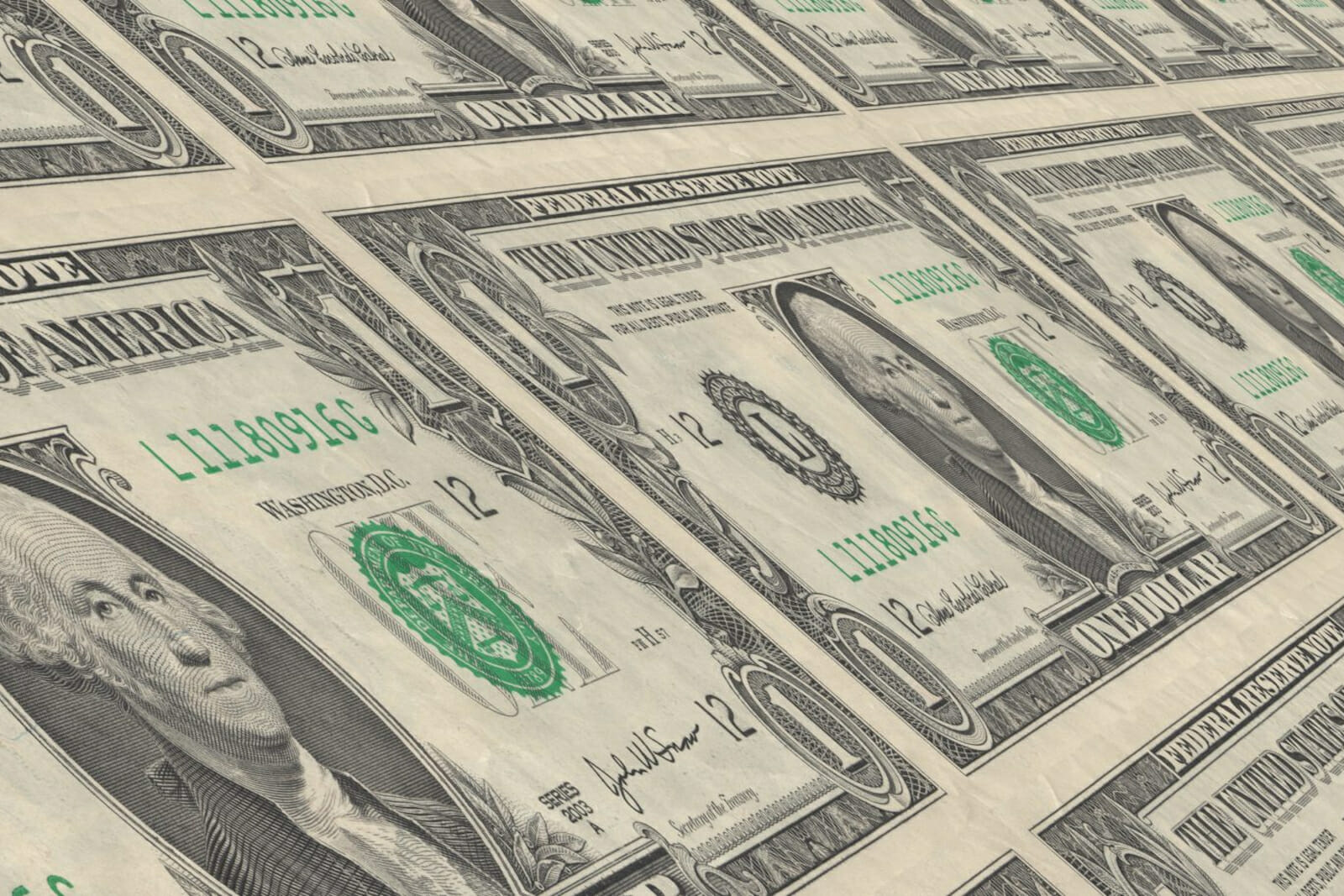
Business
The U.S. Has Embraced Modern Monetary Theory in Fact If Not in Name.
Modern Monetary Theory (MMT) is alive and well in the United States. While MMT is derided by mainstream economists, the federal government is practicing MMT. From running massive federal government deficits, to the operations of the Federal Open Market Committee (FOMC) by the Federal Reserve Bank, the United States is practicing a policy of MMT that is currently underpinning the economy of the United States.
Modern Monetary Theory is not a new economic theory. It is considered a heterodox macroeconomic theory that describes money (used in financial intermediation) as a public monopoly by the political government, of any nation, of that country’s currency (typically a currency that is a fiat currency) and that this monopoly allows the political restriction of currency that is needed to supply the financial assets needed to pay taxes and satisfy saving desires minus consumption.
Advocates of MMT claim that the government should use fiscal policy to achieve full employment by printing new money to satisfy the economic demands and needs of its population regardless of its tax base and tax policy.
U.S. Deficits Since 1980
Budget deficits have become a permanent fixture in the U.S. economy for the past 20 years. The last time that the U.S. government ran a surplus was in 2001. From 1998 to 2001 the federal government ran a surplus, and the U.S. 30 year bond was actually dropped from the Federal Reserve’s issuance of bonds on February 9, 2002. With the return of steadily increasing U.S. deficits, the 30-year long bond was brought back on February 9, 2006.
From 1980 the national debt was $908 billion, the U.S. national debt has since risen to an estimated $24 trillion for 2020.
The U.S. federal deficit for the fiscal year of 2019 was $960 billion and in 2020 is estimated to be over $1 trillion for the fiscal year.
Both major political parties in the United States has been complicit in the rise of the U.S. debt. In 1980 the debt ratio to U.S. GDP was 32%. In 2019 the debt ratio to U.S. GDP was at 106.1%.
By raising the amount of debt relative to the country’s GDP, the United States fits the technical definition of engaging in Modern Monetary Theory. In addition to massive deficit spending, the U.S. has reinforced its behavior in practicing Modern Monetary Theory with the behavior of the Federal Reserve and the actions of the FOMC.
While these actions are not coordinated by the Federal Reserve and the budget of the U.S., these actions complement each other and has the end result of increasing the money supply of the U.S. without being tied to increased revenue flows through increased taxation.
Quantitative Easing Explained
Quantitative Easing (QE) is an expansion of a country’s money supply. This is accomplished by a country’s central bank buying mortgage-backed securities and purchasing that country’s securities on the open market. This increases the liquidity of capital in the flow of money to the capital markets in the country’s economy. No money actually changes hands however; the country’s central bank merely adds a credit to bank’s reserves, allowing them to make more money available to business’ and the general public.
Japan was the first country to begin the policy of quantitative easing in 2001. Between 2001 and 2004 the Bank of Japan injected some 35.5 trillion yen ($324 billion at current exchange rates) into the Japanese economy. Nominal economic growth increased from 2002 to 2007, but in 2008 with the world financial crisis, the Japanese economy again returned to recession.
Quantitative Easing by the U.S. Federal Reserve
The U.S. Federal Reserve (Fed) began its own form of quantitative easing (QE1) on November 25, 2008 by purchasing $600 billion in agency mortgage-backed securities (MBS) and agency debt. The Fed had already dropped interest rates from 5.25% to practically zero as a result of the 2007-2008 financial crisis. While assisting the economy, the Fed was concerned that the increase in economic activity was not responding to an appropriate level; which is why the Fed began its own policy of quantitative easing. The Fed ended QE1 in March of 2010.
With the U.S. economy still languishing, the Fed began QE2 in November of 2010. The Fed began to purchase $75 billion of dated treasuries a month and ended its purchases in November of 2011. The total amount of treasuries purchased was $600 billion.
With the U.S. labor market failing to improve, the Fed announced an open-ended policy of purchasing agency MBS securities in September of 2012 with purchases totaling $40 billion a month. In December of 2013, the Fed announced that it was tapering off of these purchases by $10 billion at each Fed meeting. What was known as QE3 ended in October of 2014.
When the Fed began quantitative easing, the Fed’s balance sheet expanded from $870 billion in August of 2007 to a high of $4.5 trillion in early 2015. After August of 2015, the Fed began to reduce its balance sheet through controlled sales of U.S. treasuries and MBS securities to reach just under $3.8 trillion in August of 2019. Since then, the Fed has since begun to expand its balance sheet, but for entirely different reasons.
A Liquidity Crunch in Repurchase Markets
The Fed first used quantitative easing to pull the economy out of the Great Recession; the current FOMC operations are to provide liquidity to meet demands for cash for repurchase (also known as repos) markets. A repurchase market is a form of short term borrowing for dealers in government securities. For example, a repo dealer will sell government securities to investors. The repo dealer will then re-purchase (hence the term repo) typically within 24 to 48 hours at a slightly higher price. The one selling the repo is essentially borrowing money to meet cash reserves, and when they buy the security back, they pay a small interest charge (which is why they buy it back at a slightly higher rate) for being able to use the security as collateral. The person buying the security is essentially lending money to the repo seller and receives their commission when the repo seller buys the security back. The implicit interest rate is known as the repo rate.
During the Great Recession, the FOMC concentrated on long term securities, typically in the 30- year bond market. Currently, the FOMC is concentrating on short term securities. The current Fed Chairman does not want the market to assume that this type of injection of cash is to provide economic stimulus, but to provide liquidity to the overnight repo market. Banks are more interested in holding short term U.S. securities than cash and other forms of debt. Short term securities and other forms of short-term debt provide a higher rate of return than cash does. While banks who belong to the Federal Reserve are required to buy stock in the Federal Reserve Bank equal to 6% of their capital, and 3% must be held in the regional Fed bank, this does not explain the extreme position of private banks in holding so much government debt in their reserve and portfolios.
When it came time for the repo market to begin on September 16th, 2019 however, there was a dramatic shortage of cash as the inter-bank market had dried up. Money Market Funds began to take advantage of the lack of cash, and were charging up to 10% interest rates as opposed to the normal rate of 2%. The banks appealed to the Fed, and after initial hesitation, the Fed responded forcefully by injecting $53 billion of liquidity into the market, and the next day an additional $75 billion to keep the credit markets from freezing up. Since the initial injection of cash into the money supply, the Fed’s balance sheet has expanded from $3.8 trillion in August of 2019 to $4.2 trillion in December of 2019. An increase of $400 billion in 4 months. A side benefit is that the Fed earns money by engaging in this type of behavior and at the end of the U.S. fiscal year, the profits are deposited into the U.S. Treasury. There is a growing trend of thought among central bankers that quantitative easing, or emergency injection of cash to stabilize the repo market is becoming a permanent fixture in the international money supply market.
A Possible Explanation of Dynamics of the U.S. Economic Policy in MMT
At the beginning of this article it was stated, correctly, that most mainstream economists do not regard the Modern Monetary Theory as a valid monetary theory. Experiments with MMT in countries like Israel, France, Chile, Peru and Venezuela, to list some, have tried and failed in their experiments in MMT. All of these countries experienced run-away inflation as a result of MMT practice. Yet at the moment, the U.S. is implementing the MMT (even though the central bank denies following such a policy) through the use of deficit spending and FOMC market operations resulting in increased economic activity, record low unemployment, and low inflation. How can this be so?
One of the possible explanations for the current success of MMT in the U.S. is that with the behavior of the free market and private banks in the U.S. MMT may be evolving from the free market instead of being imposed by the government. Previous experiments with MMT was always from the top down, but with private market behavior forcing the government to inject capital to maintain order in money market funds, the impetus for MMT is percolating up from the bottom. That said, the continued massive deficits are still being imposed from the top via legislative action. This is a new phenomenon, and one that must be examined in greater detail before any firm conclusion can be made.

